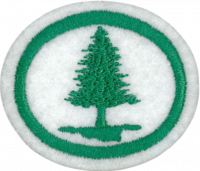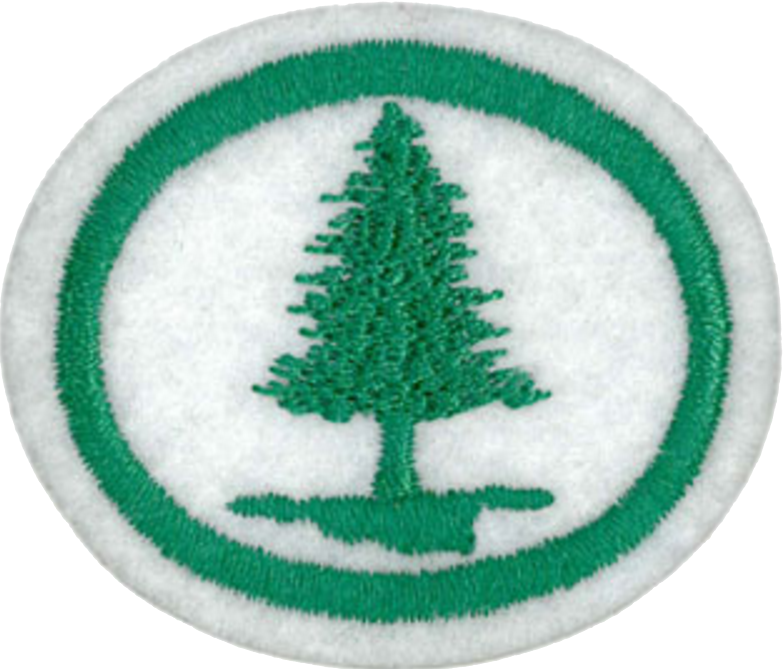Difference between revisions of "AY Honors/Trees/Answer Key/en"
(Updating to match new version of source page) |
(Updating to match new version of source page) |
||
| Line 151: | Line 151: | ||
*[http://www.amazon.com/TREES-NORTH-AMERICA-GUIDE-IDENTIFICATION/dp/B000GR1XMQ/sr=8-2/qid=1159546670/ref=sr_1_2/002-2647840-1037601?ie=UTF8&s=books ''Trees of North America, A Guide to Field Identification''], by Brockman and Merrilees. Golden Press, New York, Copyright 1986, 1979, 1968. | *[http://www.amazon.com/TREES-NORTH-AMERICA-GUIDE-IDENTIFICATION/dp/B000GR1XMQ/sr=8-2/qid=1159546670/ref=sr_1_2/002-2647840-1037601?ie=UTF8&s=books ''Trees of North America, A Guide to Field Identification''], by Brockman and Merrilees. Golden Press, New York, Copyright 1986, 1979, 1968. | ||
| − | |||
<noinclude></noinclude> | <noinclude></noinclude> | ||
{{CloseHonorPage}} | {{CloseHonorPage}} | ||
Latest revision as of 00:28, 15 July 2022
1
Trees are generally taller than shrubs and have a main trunk from which all the secondary branches grow. Shrubs are generally shorter and may have multiple stems rather than a single trunk. Some plants can be considered either shrubs or trees depending on their growing conditions, so the division should not be considered exact.
2
Unless you are already very familiar with the trees in your area, you will need to get a field guide on trees for this activity. Illustrating all the tree species you may encounter is well beyond the scope of a single chapter in an answer book!
It is best to collect the leaves in the spring or early summer before insects and weather have had a chance to damage them, but if you prefer, you can try to collect them in the fall when the colors change.
When you go out collecting, take the field guide with you. It is important to identify the leaves as you collect them, as you can look at more than just the leaves for identification. The bark, environment, buds, and shape of the tree are all important clues to the tree's species. This is especially important if you wish to differentiate trees of the same genus (such as black cherry, pin cherry, choke cherry, etc.).Indeed, proper identification may not be possible from just the leaf.
Collect leaves that are typical for the tree, but remember - smaller leaves are going to be easier to fit onto an 8.5x11 inch sheet of paper.
Press the leaves by placing them on some sort of absorbent paper - newspaper, paper towels, tissues, etc. Then place these under a stack of books or in a leaf press. After two weeks, the leaves should be flattened, dried, and well-preserved. Evergreens such as spruce and fir are difficult to preserve this way as the needles will fall off. The more ambitious may wish to encase the leaves in epoxy, as this preserves the color and eliminates the need for pressing (meaning the leaves also retain their three dimensional features).
Once the leaves have been pressed, you can glue, tape, or laminate them onto notebook paper. Use loose-leaf if you wish to rearrange them later. You may also place the pressed leaves between two sheets of wax paper, cover with a towel, and iron.
3
3a
- Sweet Gum: the gummy sap of this tree has been used as chewing gum.
- Cork Oak forms a thick, rugged and corky bark. Over time this bark can develop considerable thickness, and this is harvested every 10-12 years as cork.
- Balsam Fir: produces a resin which is known as Canadian Balsam. A balsam is the same thing as a balm, a soothing liquid - anything that soothes, heals, or restores.
- Boxwood: produces a tight-grained wood ideal for carving or for making boxes.
3b
- Mountain Ash grow in the mountainous areas of the northern US and Canada.
- Swamp Ash live in the swamps of the southern US.
3c
- Sugar Maple: The primary source of sugary maple syrup.
- Hornbeam: The common English name of "hornbeam" derives from the hardness of the wood (likened to horn) and the Old English beam, meaning a tree (like the German word "baum" which we know as "tannenbaum").
- Tulip Tree: is so named because its flowers resemble tulip flowers.
3d
- Brazilwood: is not named after Brazil - Brazil is actually named for the tree!
- Cedar of Lebanon, is a coniferous tree native to the mountains of the Mediterranean region, in Lebanon, western Syria and south central Turkey
- Mexican Buckeye is a shrub or small tree native to northeastern Mexico and adjacent western Texas and southern New Mexico.
3e
- Douglas Fir: The common name honors David Douglas, the Scottish botanist who first introduced the tree into cultivation in 1826.
- Fraser Fir: named after John Fraser, a Scottish botanist. Fraser Firs are farmed and sold as Christmas trees.
4
The two great classes of trees are the gymnosperms and angiosperms. The gymnosperms do not produce flowers, but rather, produce naked seeds usually attached to the scale of a cone (such as a pine cone). The angiosperms do produce flowers which in turn become seed-bearing fruits (or nuts). More commonly, the gymnosperms are called evergreens, though this is not an accurate term because some angiosperms are evergreen (such as palms and the live oak). Also, the Ginkgo is a gymnosperm, but it is not evergreen. Gymnosperms and angiosperms are also commonly referred to as softwoods and hardwoods though those terms are not terribly accurate either, as several gymnosperms have hard wood and several angiosperms have soft wood.
5
Properly managed, forests are a renewable resource. In order to ensure a continuous supply of forest products (such as lumber), forests must be properly cut and replanted. Forests also serve as an important habitat for several species, both animal and plant. When plants lose their habitat they simply die. When animals lose their habitat, some will die and others will move into other areas - notably, areas where humans live. This promotes undesirable encounters between potentially dangerous animals and humans, with the animal invariably getting the short end of the stick.
6
6a
Oak, maple, pine, teak.
6b
Pine, fir, spruce
6c
Walnut, oak, cherry, maple, pine, mahogany
6d
Hickory, ash
6e
Locust, cedar, redwood, fir (treated)
6f
Hardwoods and softwoods.
6g
Oak, hickory, ash
6h
Osage orange, yew, and elm for bows. Cedar, spruce, and fir for arrows
6i
Softwoods such as pine and cedar.
6j
Hardwoods, especially hickory and mesquite.
7
7a
Bald Cypress, Sycamore, Willow, Swamp White Oak, Swamp Chestnut Oak, Overcup Oak, Tupelo Gum and Cottonwood.
7b
Larch, Bristlecone Pine (and many other pines), Birch, and Beech.
References
- Trees of North America, A Guide to Field Identification, by Brockman and Merrilees. Golden Press, New York, Copyright 1986, 1979, 1968.


